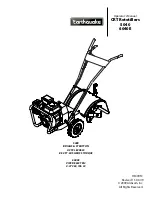
28
6-13
Inspection of the battery
Refer to the instruction manual for the battery.
Having cleaned a section around
the level lines with a damp cloth,
check whether the electrolyte level is
between “UPPER” (maximum level
line) and “LOWER” (minimum level
line) limits.
If the electrolyte level has fallen
to less than halfway between the
“UPPER” and “LOWER” limits,
add distilled water to the battery
immediately until the “UPPER” limit is
reached.
Upper
limit
Lower
limit
● Do not drink the electrolyte and avoid contact with skin,
eyes, or clothing. Wear protective glasses and protective
clothes.
● The use of fire is strictly prohibited when inspecting or
charging the battery. The electrolyte is diluted sulfuric
acid so do not let it come into contact with your skin or
the machine. Should it come into contact with your skin or
clothes, immediately wash the affected area with water and
seek treatment from a doctor, particularly if it has come into
contact with your eyes or you have swallowed it.
● Never smoke near the battery and keep sparks and flames
away from it.
● To disconnect the battery, remove the negative (-) battery
cable first and the positive (+) battery cable last. To connect
the battery, attach the positive (+) cable first. If these steps
are performed in the opposite order, bringing an item such
as a tool into contact with the machine may cause a short
circuit, which may result in a spark.
● When connecting the battery cables, make sure that you
connect the positive and negative terminals correctly. If you
fail to do so, the battery and the electrical equipment may
be damaged. (The red cable should be connected to the
positive terminal.)
● Using a dry cloth to clean the battery may cause static
electricity to be generated, which may result in a fire or
explosion.
Fuse holder
Designated fuse
Glass fuse: 20 A (φ6.4×30 mm)
6-11
Replacement of fuses
● Make sure you disconnect the negative (-) battery cable
before performing maintenance on the electrical circuitry.
● If the fuse has blown, there may have been a short circuit
in the electrical circuitry. Investigate possible causes
such as a terminal connection failure, damaged wires/
terminals, and incorrect wiring.
● A short circuit in the electric wiring may cause a fire,
electricity leakage, or electrical equipment failure. If a
terminal connection has failed, the wiring or a terminal
has been damaged, or aging has resulted in damage to
the wiring, repair or replace these parts immediately.
● Make sure you disconnect the negative (-) battery cable
before performing maintenance on the electrical circuitry.
6-12
Inspection of the electric wiring












































